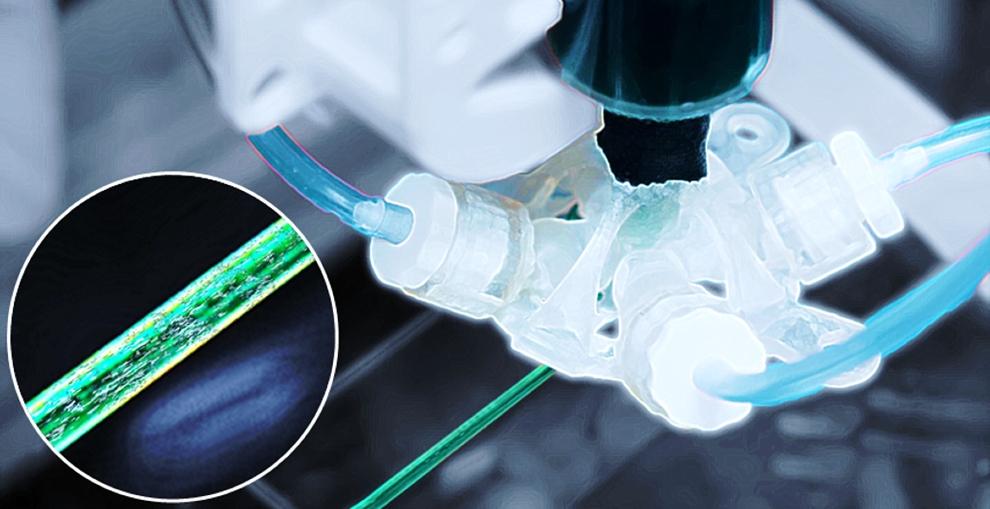- FMA
- The Fabricator
- FABTECH
- Canadian Metalworking
Our Publications
Categories
- Additive Manufacturing
- Aluminum Welding
- Arc Welding
- Assembly and Joining
- Automation and Robotics
- Bending and Forming
- Consumables
- Cutting and Weld Prep
- Electric Vehicles
- En Español
- Finishing
- Hydroforming
- Laser Cutting
- Laser Welding
- Machining
- Manufacturing Software
- Materials Handling
- Metals/Materials
- Oxyfuel Cutting
- Plasma Cutting
- Power Tools
- Punching and Other Holemaking
- Roll Forming
- Safety
- Sawing
- Shearing
- Shop Management
- Testing and Measuring
- Tube and Pipe Fabrication
- Tube and Pipe Production
- Waterjet Cutting
Industry Directory
Webcasts
Podcasts
FAB 40
Advertise
Subscribe
Account Login
Search
Shape-shifting 3D printing nozzle reportedly improves composite parts
- January 18, 2021
- News Release
- Additive Manufacturing

The morphing nozzle is designed to 3D-print parts made from fiber-filled composites. The nozzle re-orients fibers during printing to enhance part strength or other desired characteristic. University of Maryland
Engineers at the University of Maryland (UMD) have developed a new shape-changing 3D printing nozzle for parts made from fiber-filled composites. The research team says the nozzle’s ability to “morph” during operation can enhance part properties like strength or electrical conductivity.
According to a report from the university’s engineering school, one challenge of working with fiber-filled composites is that their performance is based on orientation of the short fibers, and orientation is difficult to control during the 3D printing process.
“When 3D printing with the morphing nozzle … the side actuators can be inflated like a balloon to change the shape of the nozzle, and in turn, the orientations of the fibers,” said Ryan Sochol, an assistant professor in mechanical engineering and director of the Bioinspired Advanced Manufacturing Laboratory at UMD’s A. James Clark School of Engineering.
Emerging 4D printing applications partially guided the researchers’ work. “4D printing refers to the relatively new concept of 3D printing objects that can reshape or transform, depending on their environment,” said UMD mechanical engineering professor David Bigio. “In our work, we looked at how printed parts swelled when submerged in water, and, specifically, if we could alter that swelling behavior using our morphing nozzle.”
UMD’s Terrapin Works 3D Printing Hub built the morphing nozzle with a Stratasys PolyJet multimaterial printer. Flexible materials were used for the inflatable side actuators and the shape-changing central channel, while the outer casing access port was printed from rigid materials.
The team is exploring using the nozzle for biomedical applications in which bulk printed objects could reshape in the presence of particular stimuli from the body. The team is also in discussions with several Department of Defense laboratories to use the morphing nozzle to support the production of weapons for defense and other military systems.
- Podcasting
- Podcast:
- The Fabricator Podcast
- Published:
- 04/16/2024
- Running Time:
- 63:29
In this episode of The Fabricator Podcast, Caleb Chamberlain, co-founder and CEO of OSH Cut, discusses his company’s...
- Trending Articles
- Industry Events
16th Annual Safety Conference
- April 30 - May 1, 2024
- Elgin,
Pipe and Tube Conference
- May 21 - 22, 2024
- Omaha, NE
World-Class Roll Forming Workshop
- June 5 - 6, 2024
- Louisville, KY
Advanced Laser Application Workshop
- June 25 - 27, 2024
- Novi, MI
























